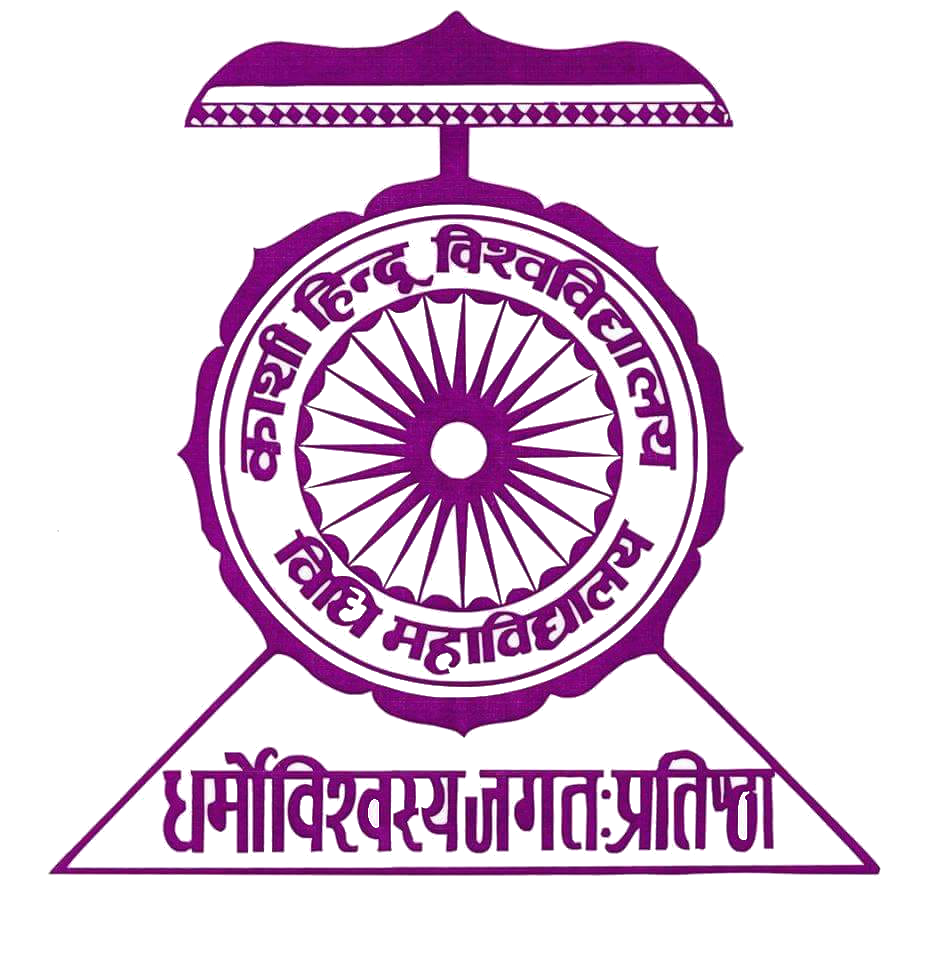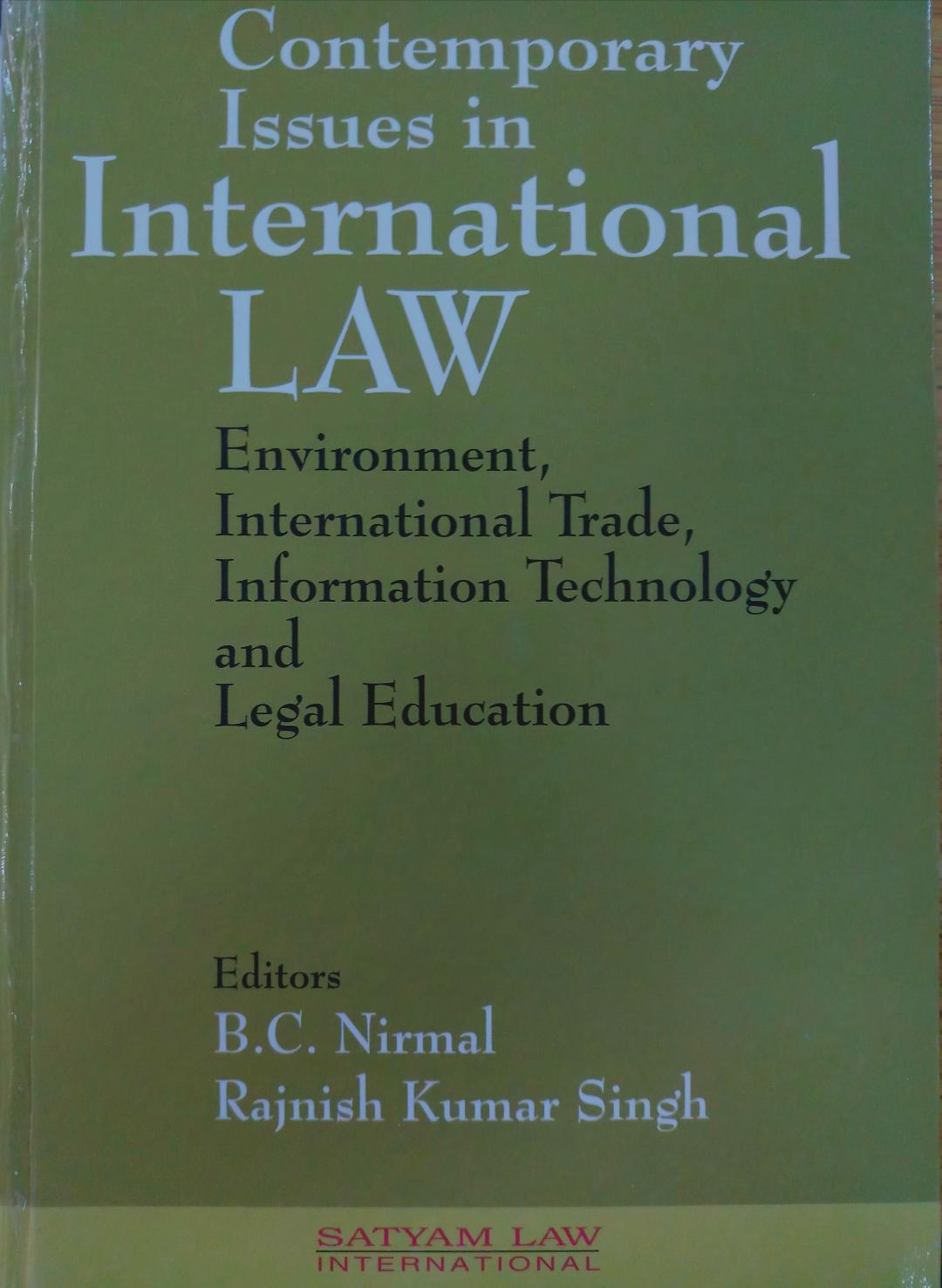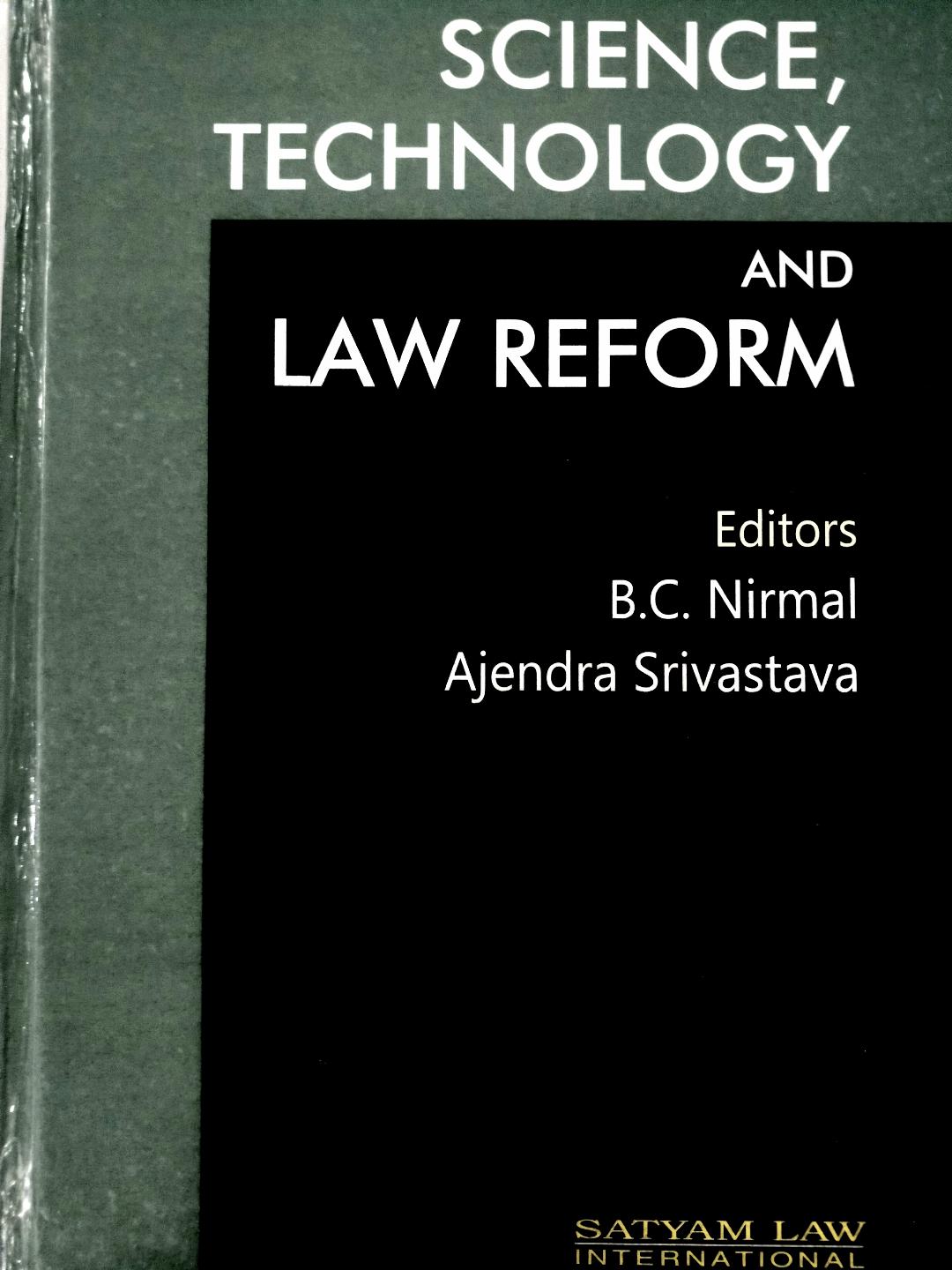

Principal Investigator - Dr. Vinod Shankar Mishra, Professor, Faculty of Law, BHU.
This work is the outcome of the UGC Sponsored Major Research Project (2008-2010) titled “Protection of Water Bodies and Regulatory Measures: A Case Study of Varanasi & adjoining Areas”.
This work highlights that in the process of loss of water bodies in Varanasi, the State is as much responsible as private agencies in terms of the policies that it has formulated and the lack of ensuring transparency and accountability. How powerful the real estate mafia has become in the city is borne out by the survey of water bodies in Varanasi. Rampant construction activities have drastically reduced the number of water bodies. In several parts of the city, irreparable damage has been done to water bodies with private individuals dumping wastes and discharging sewage water into them. Many water bodies of the city have already lost their existence. One can find several instances of encroachment of water bodies in Varanasi city. These are exemplified by Nadesar Talab, Sarang Talab, Matri Kund, Englishia Line Talab. Laharatara Talab. Not only has the VDA committed blunders by developing residential colonies like Aekta Colony (Om Kaleshwar Talab) on ponds and allotting pond land to companies like BSNL (Hartirath Talab), but VNN has also closed many ponds by utilizing them as dumping ground. Besides this, the officials have also kept their eyes closed towards the bid of the land sharks to grab the land of water bodies for commercial gains. Encroachment of the water bodies is at the heart of the problem.
Water bodies have degraded rapidly because polluters have not been penalized, and the general public and stakeholders have not been included in the decision-making process and are not getting sufficient economic benefits from restoration. The Supreme Court of India has issued a clear directive for protection of water bodies in 2001. However, a slow and steady death of water bodies, is taking place in spite of an express directive from the Supreme Court to protect them.
Grant - 707100.00 Rupees
Term - 3years
Principal Investigator - Dr. Adesh Kumar, Assistant Professor, Faculty of Law BHU.
Drug addiction and neglect of child is a social evil and is presently spreading like an epidemic. The evil is not only spreading in urban areas but also in rural areas alike. The phenomenon of drug abuse has been present in all societies of the world from pre-industrial times to the technologically most sophisticated society of the world today. Drugs have a wide range Physiological, psychological and social effects not only on the drug addicts but also on the persons associated with them. Unfortunately a large number of drug addicted and neglected children in Varanasi city and adjoining areas are bound to reside and work on the railway platform and other places in addicted position. These neglected children inhale drugs and highly toxic chemicals like thinner used for whitener and nail polish, solution used for tyre puncture and liquid medicines etc. which is very easily available on the shops. Due to inhaling these toxic chemicals their life and health is in a great danger. These children are left on platform, river Ganga ghats and other places to die alone and nobody cares either they live or die. These children either beg or work in railways coaches for earning their bread and butter. Sometimes they also work in the shops on railway stations, rivers, Ganga ghats and other places or collect empty mineral water bottles, garbage etc. They neither have shelter nor the care and protection of their parents. The child neglect threatens a child’s safety by placing him at risk of physical and emotional injuries and even death. Exploitation of these children mentally, physically and sexually is common phenomena now a days but the strange thing is that these violations of human rights are going on in front of the authorities who are responsible to prevent it. Despite of adequate constitutional guarantees and different legislative measures, it is found that a large number of drug addicted and neglected children are the victims of various forms of maltreatments.
The objective of the study is to examine the legal issues, effectiveness and the adequacy of the current legal framework for the protection of human rights of the neglected and addicted children with special reference to the children who resides and work on railway stations, rivers, Ganga ghats and other places. Another objective of the study is to find out the legal as well as social measures for the protection of human rights of these children and suggest ways to rehabilitation and healthy environment for all kind development.
 The book contains the edited papers of the contributions by participants of International Conference on International Environmental Law, Trade Law, Information Technology Law and Legal Education, 2-3 March, 2013 at the Faculty of Law Banaras Hindu University.
The evolution of international law has reached a stage where we witness diminishing power of the State and its capacity to deal with economic matters challenging the existing notions of territory and sovereignty. The State seems to be no longer the only player in international law and international relations and the decision-making process at the global level appears to be no longer a monopoly of the States as was the case in the 20th century. In an attempt to explore the changing nature of international law and its ability to respond to the contemporary issues related to international environment, trade and information technology, the present volume, “Contemporary Issues in International Law (Environment, International Trade, Information Technology and Legal Education)”, brings together the perspectives of various foreign and national scholars in the form of 44 chapters. The themes and sub-themes considered in the book may seem to be distinct but are in fact, closely inter-related. The tremendous growth of information technology has provided immense opportunities for international trade and commerce and expanding trading activities are leading to a global environmental crisis. This book contains the reflections of various Asian, African and European scholars on the various facets of contemporary international law. A common concern discernible throughout the book is that the international trade, global environment, information technology and legal education needs appropriate national, normative and institutional responses as well as global cooperation of members of the international community. The book considers such diverse issues as sustainable development, climate change, global warming, Rio+20, technology transfer, agro-biodiversity and genetic resource, authority for protection of environment, human right to water, globalization, human rights, sui generis options in IP Laws, impact of liberalization on higher education, regulation international trade, intellectual property rights, collective administration of copyright, broadcast reproduction right, implementation of copyrights law, communication rights under copyright law, arbitration for IP disputes, doctrine of exhaustion of rights, trans-border reputation of trademark, information as asset, cyber obscenity and pornography, e-governance, taxation of e-commerce, computer crime, information technology, domain names, research excellence in legal education, ideological perspective on legal education, challenges for law teachers and clinical legal education.
The book contains the edited papers of the contributions by participants of International Conference on International Environmental Law, Trade Law, Information Technology Law and Legal Education, 2-3 March, 2013 at the Faculty of Law Banaras Hindu University.
The evolution of international law has reached a stage where we witness diminishing power of the State and its capacity to deal with economic matters challenging the existing notions of territory and sovereignty. The State seems to be no longer the only player in international law and international relations and the decision-making process at the global level appears to be no longer a monopoly of the States as was the case in the 20th century. In an attempt to explore the changing nature of international law and its ability to respond to the contemporary issues related to international environment, trade and information technology, the present volume, “Contemporary Issues in International Law (Environment, International Trade, Information Technology and Legal Education)”, brings together the perspectives of various foreign and national scholars in the form of 44 chapters. The themes and sub-themes considered in the book may seem to be distinct but are in fact, closely inter-related. The tremendous growth of information technology has provided immense opportunities for international trade and commerce and expanding trading activities are leading to a global environmental crisis. This book contains the reflections of various Asian, African and European scholars on the various facets of contemporary international law. A common concern discernible throughout the book is that the international trade, global environment, information technology and legal education needs appropriate national, normative and institutional responses as well as global cooperation of members of the international community. The book considers such diverse issues as sustainable development, climate change, global warming, Rio+20, technology transfer, agro-biodiversity and genetic resource, authority for protection of environment, human right to water, globalization, human rights, sui generis options in IP Laws, impact of liberalization on higher education, regulation international trade, intellectual property rights, collective administration of copyright, broadcast reproduction right, implementation of copyrights law, communication rights under copyright law, arbitration for IP disputes, doctrine of exhaustion of rights, trans-border reputation of trademark, information as asset, cyber obscenity and pornography, e-governance, taxation of e-commerce, computer crime, information technology, domain names, research excellence in legal education, ideological perspective on legal education, challenges for law teachers and clinical legal education.
 The book contains the edited papers of the contributions by participants of National Seminar on “Science, Technology & Law Reforms” on November 03-04, 2012 by the Faculty of Law, Banaras Hindu University.
The book contains the edited papers of the contributions by participants of National Seminar on “Science, Technology & Law Reforms” on November 03-04, 2012 by the Faculty of Law, Banaras Hindu University.
Adaptability to changed circumstances is sine qua non of a legal system. Law should always be changed to keep pace with the new changes brought about by technological developments. The discoveries of the natural and social sciences should always be taken into account by law and it should be reformed accordingly. This is more so necessary in view of the fact that law and science have undergone profound change in recent years as a result of new discoveries. New discoveries and inventions have brought the two branches of study closer to each other which make it imperative to look closer at the complex relationship of science and law.
This book is a scholarly contribution to the existing literature on the relationship of law and science. It offers a comprehensive coverage of the key aspects emerging from interplay of new technologies and law and explores some of the problems associated with it. Contributions in the book examine the impact of science and technology on the law and judicial process from a variety of perspectives and suggest the ways to mitigate the tension between science and law. The contributors include imminent judges and academicians. The essential message of their contributions is that although science and law are inherently different, science and technology can be immensely helpful for law in its pursuit of justice. Both science and law are complementary to each other. Science makes the law enforcement and administration easy and efficient while law can channel science and technology to make them more acceptable and beneficial to the society. Armed with each other’s strengths, they will undoubtedly be better able to cope with the challenges of modern age.
The present volume contains 22 thoughtful and insightful chapters which cover some prominent aspects emerging around new technologies and challenges they pose for law. It covers in addition to jurisprudential perspectives on the relation of science and law, key aspects like issues of law and morality surrounding assisted reproductive technology (ART), surrogacy, organ transplantation, sex selection, nanotechnology, human therapeutic cloning and stem cell research. Other key aspects include reforms in the criminal justice system, bio-safety challenges, privacy and safety issues in the wake of new technologies with focus on the need of curbing cyber crimes, copyright issues, issues involved in technology transfer from developed to developing countries, human rights to food, protection of space environment and civil aviation related issues.
Copyright ©2018 Faculty of Law (Banaras Hindu University), Varanasi - 221005